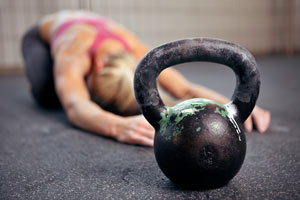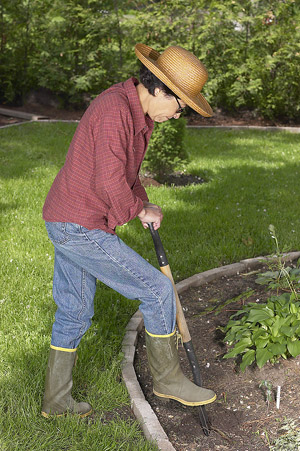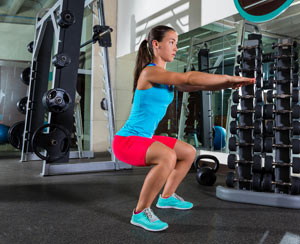
Whatever you do, don’t quit. Instead, have a plan that will help get you through those rough patches. It’s easier than you might think. Just make a list to remind yourself of everything that motivates you to be healthy and stay fit. But be sure to write it down, either on paper or stored on your phone or tablet, because it’s guaranteed that you will forget each and every one of these motivators when you are having a bad day.
Where should you start?
The best way to come up with your list is to jot down all the positive psychological and physical and attributes of working out. These are things that probably already go through your head when you are having a good day.
Have you ever been out for a run when the weather is perfect, the wind seems to stay at your back no matter which way you turn and every muscle in your body seems to be working together like a fine-tuned machine? Yes! That’s the day to make your list, but here are a few ideas to get you started.
Psychological benefits of working out
It’s not always easy to make the time to exercise, so remind yourself to make the most of your workout so you feel good about using your time wisely. Also, it never feels good to be a quitter. When it comes to other areas of your life, such as your job or your family, you always find a way to get through the tough times. So, when it comes to a tough workout, just remind yourself you have done it before so you can do it again.
Physical benefits of working out
There is no denying how awesome you feel after a great workout, but for those days when the after part can’t come soon enough, just focus on how much energy you will have to get through the rest of your day’s to-do list. Lastly, while exercise is important for you overall health, the way it makes your clothes fit can boost your confidence like nothing else. So remind yourself that you probably didn’t have a small salad for lunch today, and you will tackle that workout with ease.
Reward yourself for your success
Using these, or your own, reminders will help you get through those really tough workouts or even those not so tough workouts that just seem harder because you are having an off day. If you are having an exceptionally bad day, try breaking your workout into segments and using your list of reminders to get through each segment. Instead of lamenting how much you have left to go, congratulate yourself for each segment you finish.
For more articles go to http://lifesportfitness.lifestyleezine.com

 If you like to spend more time on the sofa than on the treadmill-blame your mother. New research suggests it’s not your fault. You may be genetically programmed to be sedentary, while skinny people are just naturally motivated to get up and dance.
If you like to spend more time on the sofa than on the treadmill-blame your mother. New research suggests it’s not your fault. You may be genetically programmed to be sedentary, while skinny people are just naturally motivated to get up and dance. Everyone wants to be healthy, and most people would like to be happy.
Everyone wants to be healthy, and most people would like to be happy. A recent study has indicated that poor sleep may not just be a symptom of Alzheimer’s Disease, but also a contributing factor. Research indicates that poor sleep may cause an increasing number of amyloid plaques to build up in the brain, and these plaques are associated with Alzheimer’s Disease.
A recent study has indicated that poor sleep may not just be a symptom of Alzheimer’s Disease, but also a contributing factor. Research indicates that poor sleep may cause an increasing number of amyloid plaques to build up in the brain, and these plaques are associated with Alzheimer’s Disease. Salads are often thought of as something bland and boring you have to eat when you’re on a diet. Fast food restaurants have cashed in on this mindset by offering taste-tempting salads that are anything but boring. Unfortunately, they’re also anything but diet friendly, as many of these creations pack more fat and calories than some of the burger and french fry combinations.
Salads are often thought of as something bland and boring you have to eat when you’re on a diet. Fast food restaurants have cashed in on this mindset by offering taste-tempting salads that are anything but boring. Unfortunately, they’re also anything but diet friendly, as many of these creations pack more fat and calories than some of the burger and french fry combinations. The importance of eating a balanced diet and getting regular exercise have been promoted to the general public for some time now. Consumers seem to be getting the message and are hitting the gym in record numbers. But the health benefits of daily exercise may be hampered by the fact that most consumers’ balanced diets don’t actually include very much real food.
The importance of eating a balanced diet and getting regular exercise have been promoted to the general public for some time now. Consumers seem to be getting the message and are hitting the gym in record numbers. But the health benefits of daily exercise may be hampered by the fact that most consumers’ balanced diets don’t actually include very much real food. If you’re like most people, now that summer is finally here you’re probably thinking you should have spent more time at the gym this winter. This may be especially true for anyone who heads to the beach on weekends or lounges poolside during the summer months and wishes they had a firmer butt to show off their new swim suit.
If you’re like most people, now that summer is finally here you’re probably thinking you should have spent more time at the gym this winter. This may be especially true for anyone who heads to the beach on weekends or lounges poolside during the summer months and wishes they had a firmer butt to show off their new swim suit. The classic bench press is a great exercise for building chest muscles, but always repeating the same exercises only targets the same area again and again. To get better results you need to mix it up.
The classic bench press is a great exercise for building chest muscles, but always repeating the same exercises only targets the same area again and again. To get better results you need to mix it up. Dividing up the household chores is one of the most difficult aspects of living with another person. Most people think only newlyweds have this dilemma, but it’s something even older couples, life-long friends and college roommates struggle with when they live together.
Dividing up the household chores is one of the most difficult aspects of living with another person. Most people think only newlyweds have this dilemma, but it’s something even older couples, life-long friends and college roommates struggle with when they live together. You’ve missed out on going to the gym for the second time this week, and you’re starting to feel a little panicked about what will happen to your fitness levels. Even though panicking won’t really help you out here, you may be right to have a little concern.
You’ve missed out on going to the gym for the second time this week, and you’re starting to feel a little panicked about what will happen to your fitness levels. Even though panicking won’t really help you out here, you may be right to have a little concern.